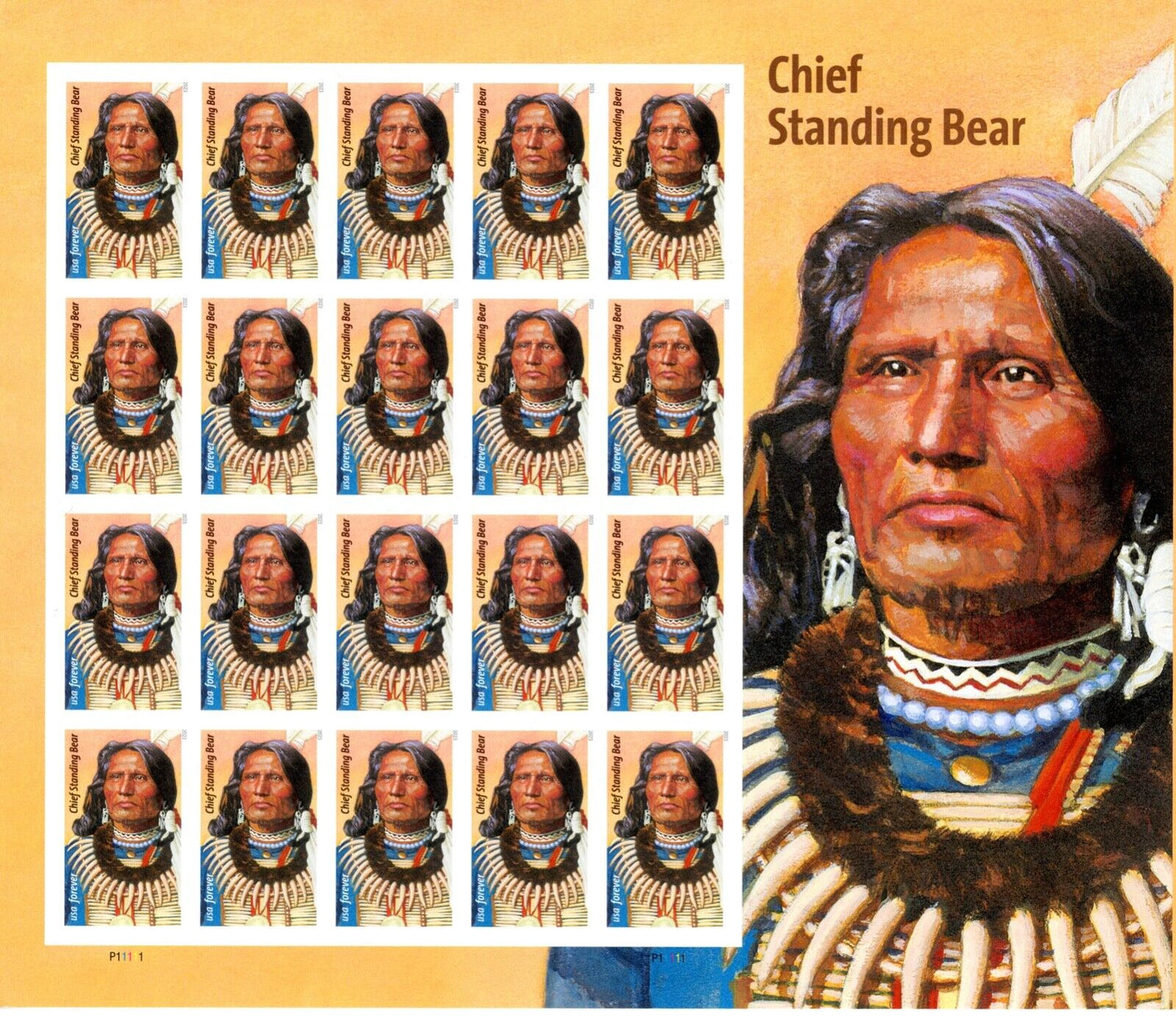Mailbox of Queens
Chief Standing Bear
Chief Standing Bear
Couldn't load pickup availability
LINCOLN, NE — The Postal Service issued the Chief Standing Bear Forever stamp today, honoring the Native American civil rights icon, who won a landmark court ruling in 1879 that determined a Native American was a person under the law with an inherent right to life, liberty, and the pursuit of happiness.
The dedication ceremony for the stamp was held near the Chief Standing Bear Sculpture at the Centennial Mall. News of the stamp is being shared with the hashtag #ChiefStandingBearStamp.
“Since the 1800’s, the Postal Service has used stamps to celebrate the legacy of great Americans and we are proud to do that today with this striking stamp of Chief Standing Bear,” said Anton G. Hajjar, vice chairman of the USPS Board of Governors. “Although the United States was founded on the principle that “all men are created equal,” it took our country far too long to recognize the humanity in many of its people – including the American Indians who lived in these lands for thousands of years. I hope this stamp will serve as a reminder of the lessons we’ve learned from Chief Standing Bear, and the brave Ponca people, especially here in the Cornhusker State.”
Chief Standing Bear (circa 1829–1908) was a member of the Ponca tribe, who lived in the Niobrara River Valley in what is now northeastern Nebraska. The tribe's traditional homeland was included in the Great Sioux Reservation established by the Fort Laramie Treaty of 1868. The federal government later decided to resolve conflicts between the Sioux and the much smaller Ponca tribe by relocating the latter to the Indian Territory in what is now Oklahoma.
The U.S. Army’s forced removal of some 700 Ponca began in the spring of 1877. Some members of the tribe died during the 600-mile journey by foot. More than a hundred others, including Standing Bear’s only son, died from disease and hunger shortly after the removal to the Indian Territory. Wanting to honor his son’s dying request to be buried in the tribe’s Niobrara homeland, Chief Standing Bear and a small band of some 29 other like-minded Ponca made the arduous trip back to Nebraska in 1879. They were arrested by the Army and imprisoned at Fort Omaha.
After attracting the sympathy of a newspaper reporter and the Army general who arrested him, Standing Bear sued the federal government for his freedom. Lawyers filed for a writ of habeas corpus on his behalf to test the legality of his detention, the first time in U.S. history such a filing had been made on behalf of a Native American.
In the closely-watched court case, Standing Bear v. Crook, Judge Elmer Dundy ruled on May 12, 1879, that an Indian was a person under the common understanding of the word and that all persons in the United States, regardless of race, had an inherent right to life, liberty, and the pursuit of happiness. The judge ordered that Standing Bear and his fellow Ponca be released from custody.
"Chief Standing Bear is a pillar for the Ponca Tribe of Nebraska and one of the pivotal civil rights leaders in American history,” said Candace Schmidt, the chairwoman of the Ponca Tribe of Nebraska. “The Ponca Tribe is elated that this stamp will help illustrate his story of justice and triumph, which is also our story. It also serves as a symbol of the pride and perseverance for all of our members past, present, and future."
A subsequent congressional investigation concluded that the government had blundered and made a mistake when it gave away the Ponca homeland and later when it forced their removal to the Indian Territory. President Rutherford B. Hayes recommended to Congress that the Ponca be allowed the choice of where to live and that they be compensated for land and other losses. Congress passed legislation to that effect in March 1881.
“It’s remarkable, that the story of Nebraska Native American civil rights leader Chief Standing Bear has progressed from a native man being considered a non-person by the U.S. Government in 1879, to today, being recognized by the Postal Service with a stamp honoring him as an American icon,” said Judi M. gaiashkibos, executive director of the Nebraska Commission on Indian Affairs. “This story of an indigenous rights hero is truly and necessarily an American story. This stamp further etches his legacy in our national consciousness and provokes necessary conversations about race, sovereignty and equality in the United States.”
Standing Bear and the members of the Ponca who had followed him returned to their old Nebraska reservation along the Niobrara River, where the chief died in September 1908. In 1924, one issue that his 1879 trial had raised was finally resolved when Congress adopted the Indian Citizenship Act, which conferred citizenship on all Native Americans born in the United States.
The stamp features a portrait of Chief Standing Bear by illustrator Thomas Blackshear II. who based the portrait on a black-and white-photograph taken in 1877. Derry Noyes served as art director and designer for this stamp.
The Postal Service printed 18 million Chief Standing Bear stamps.
Chief Standing Bear Forever stamps will be issued in panes of 20. Forever stamps, always equal the value of the current First-Class Mail 1-ounce price.
Other details:
Free shipping
30-day return policy
Secure payments
For more details, see Shipping & Return Policy and Payments Policy.
Share


